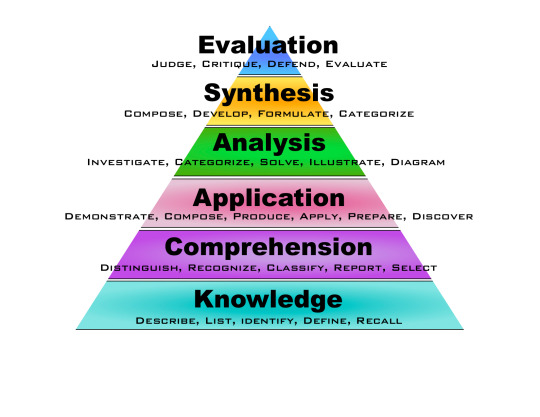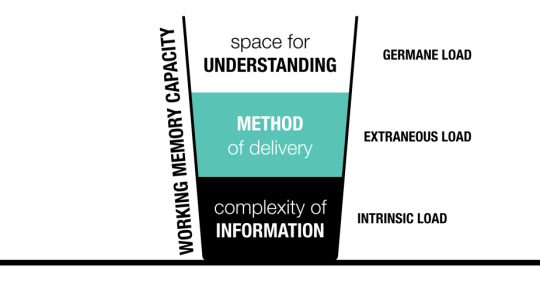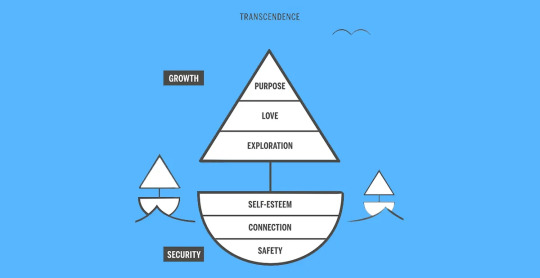Text
Operant Conditioning
Operant conditioning was professionally discovered by B. F. Skinner. Derived from classical conditioning and behaviorism, it was proposed there were ways of learning and conditioning other than classical conditioning.
Through the use of neutral operants, reinforcements and punishments, behaviors can either increase or decrease frequency based on environmental response. Positive reinforcement is when a target behavior is rewarded, causing it to be more frequent. Negative reinforcement is when a target behavior is punished, causing it to be less frequent.
0 notes
Text
Classical Conditioning
Classical conditioning is a type of conditioning, professionally discovered by Ivan Pavlov. Classical conditioning later went onto inspire the basis of behaviorism.
Classical conditioning is focused on creating a conditioned response from the combination of an unconditioned stimulus that provides the target behavior already, and a neutral stimulus that is the desired stimulus to cause the target behavior.
A notable example of this is the experiment often referred to as Pavlov’s dog. In this experiment, the unconditioned stimulus was food, which provided the target behavior of drooling. When paired with the neutral stimulus of a bell ringing, overtime the dog was conditioned to drool when the bell rung.
2 notes
·
View notes
Text
Bloom’s Taxonomy
Originally created in the 1950′s by Benjamin Bloom, it was created as a way to classify levels of thinking. Often it is used to categorize how well someone knows something, along with helping teachers create learning objectives for their students. In 2000, a revised version was created by Lauren Anderson.
Original Version:

[ID: A visual representation of the original Bloom’s Taxonomy. A triangle with 6 horizontal levels reads each learning objective and a quick explanation. Starting at the base, the first level is light blue and reads “Knowledge: describe, list, identify, define, recall.” The second level is purple and reads “Comprehension: distinguish, recognize, classify, report, select.” The third level is pink and reads “Application: demonstrate, compose, produce, apply, prepare, discover.” The fourth level is green and reads “Analysis: investigate, categorize, solve, illustrate, diagram.” The fifth level is yellow and reads “Synthesis: compose, develop, formulate, categorize.” The sixth and top most level is blue and reads “Evaluation: judge, critique, defend, evaluate.” /End ID]
Revised Version:

[ID: A visual representation of the updated Bloom’s Taxonomy. The pyramid has 6 levels, each stating a part of the Taxonomy. To the right are explanations of the learning objective. Starting from the bottom, the first level is purple and reads ‘Remember: recall facts and basic concepts. Define, duplicate, list, memorize, repeat, state.’ The second level is blue and reads “Understand : Explain ideas or concepts. Classify, describe, discuss, explain, identify, locate, recognize, report, select, translate.” The third level is green and reads “Apply. Use information in new situations. Execute, implement, solve, use, demonstrate, interpret, operate, schedule, sketch.” The fourth level is yellow and reads “Analyze: Draw connections among ideas. Differentiate, organize, relate, compare, contrast, distinguish, examine, experiment, question, test.” The fifth level is orange and reads “Evaluate: Justify a stand or decision. Appraise, argue, defend, judge, select, support, value, critique, weigh.” The topmost and last level is red and reads “Create. Produce new or original work. Design, assemble, construct, conjecture, develop, formulate, author, investigate.” /End ID]
Sources below:
https://www.turtlelake.k12.wi.us/faculty/wmarek/bloomstaxonomy.cfm
http://www.fredwbaker.com/storyboard-graphic-blooms-taxonomy/
1 note
·
View note
Text
Memory
A person’s memory is the term used to describe the storage of previously gained information from perception. Memory is generally split up into three types: sensory, short term/working, and long term.
Sensory:
Sensory memory is generally described as what you can perceive with senses ‘right now’
Extremely short (approximately 3 seconds or less)
Example: seeing the trail of light a flashlight leaves in the dark when moved around quickly
Short Term Memory / Working Memory:
Short term memory and working memory are generally interchangeable terms
STM lasts for 5-20 seconds, but can be shorter or longer depending on the person
STM can last for even longer if kept in phonological loop (repeating what needs to be remembered out loud or in your head)
STM can hold 7 +/- 2 items (can hold more if chunking is used) (see cognitive load theory)
Connecting items in STM to things in LTM can increase recall for memory after transferred to LTM
Long Term Memory:
Believed to be nearly infinite
Knowledge can be retained over a life time
LTM can lose memories due to damage and illnesses
recall of LTM is often cue dependent
In order for something to be in LTM, it has to pass through sensory and short term
#vocabulary#memory#chunking#cognitive load theory#short term memory#working memory#perception#long term memory
2 notes
·
View notes
Text
Cognitive Load Theory
Cognitive Load Theory is the theory outlining limits on cognition abilities. Cognitive load can be thought of as the active part of working memory. It is often divided into three sections, intrinsic, extraneous, and germane.
Intrinsic: complexity from the task at hand
Extraneous: complexity from outside influence, distractions, stimuli and other information
Germane: complexity from processes involved in attention, and related to the activity

Sources below:
Information: https://www.sciencedirect.com/topics/psychology/cognitive-load-theory
Image: https://www.stemlynsblog.org/a-decade-of-education-theory-the-rise-and-rise-of-cognitive-science-of-learning/
1 note
·
View note
Text
Social Learning Theory
The theory of acquiring behaviors through observation and imitation was first referred to as Social Learning Theory by psychologist Albert Bandura. The theory continues to note that people can learn just by watching others or through instruction, even without needing to copy what was done or threat of consequence. This also supports the idea that vicarious reinforcement is not needed to learn. Learning by copying and observation is known as modeling
0 notes
Text
Making
What it is:
Making is the process of creating something shareable
What it does:
Increases practical knowledge
Increases procedural knowledge
Can cause satisfaction + happiness
Examples/Applications:
Project based learning
Creation based hobbies (baking, knitting, ceramics, gardening, music, etc)
Interactive museums
Why/How it works:
Trial and error process produces many iterations of the creation, essentially doing deliberate practice
Others can learn by experiencing the creation
Risks:
performance plateau
knowledge from making may not connect with previous knowledge or other areas of interest
may not apply knowledge elsewhere
teachers applying too many or too little restrictions can remove benefits
continuous repetition of creating can cause anger or burn out
#making#approaches#working with teachers#project based learning#science#art#hobbies#deliberate practice
0 notes
Text
Participation
What it is:
participation is engaging in an existing activity
What it does:
Increases knowledge in skill area
Increases performance
Increases involvement
Increases appreciations
Allows ability to teach after enough participation
Allows access to experts in field (or more knowledgeable)
Potential life long skill
Examples/Applications:
playing on a sports team
answering a question in class
listening in class
solving puzzles with friends
having a discussion
joining a club
joining an online forum/group
Why/How it works:
Exposure and involvement in a desired activity will increase knowledge
social learning theory
Experts can help beginners by offering advice and scaffolding
Risks
can have lack of structure
expert may not have enough knowledge
providing scaffolding in wrong areas, taking away scaffolding too early or too late for zone of proximal development can be detrimental to skill level
starting before zone of proximal development has been reached can be detrimental to mental and physical health
#approaches#participation#zone of proximal development#Social Learning Theory#scaffolding#hobbies#math#science#humanities and arts#humanities#arts
0 notes
Text
Self Explanation
What it is:
Self Explanation is the process of rewording new information
What it does:
Increases procedural knowledge
Increases conceptual knowledge
Increases retention
Examples + Applications:
Write down steps of a math problem as you do it
Explaining to yourself why each step happens
Talk yourself through a problem
Create a diagram for yourself
Why/How it works:
Connects new information to previously learned material by using previous knowledge to explain it
Since it is connected, it is no longer independent and is less likely to be forgotten
Metacognition starts if you properly employ this technique and really think about what you’re thinking about
Risks:
if you only paraphrase, self explanation will not work properly
will be difficult without enough background knowledge
if doing this absent-mindedly, it won’t work correctly
0 notes
Text
Visualization
What it is:
Visualization is making an external spatial representation of information
What it does:
Helps discover structure
Helps organize
Helps find relationships
Decreases cognitive load
Increases conceptual knowledge
Makes vague things more specific
Increases engagement
Increases communication skills
Examples/Applications:
Directions on a Map
Venn diagrams
Cycles
Spreadsheets / Tables
Why/How it works:
Decreases cognitive load by externalizing what would be in working memory
Can use working memory to analyze instead of store
Can visually search instead of repeated recalling from long term memory
Increases relational specificity by making vague things more specific (Gestalt principles)
Easier to interpret because of visual structure
More intuitive
(Combines with self explanation)
Risks:
Conflicting possibilities can’t be seen at the same time easily
Can cause verbal overshadowing
Visualizations can be different from person to person
Other interpretations can be blocked from seeing one visualization too much
#approaches#visualization#cognitive load theory#structure#math#science#humanities#arts#self explanation
0 notes
Text
Worked Examples
What it is:
Worked examples are models of how experts would find the solution to a problem
Step by step examples of how something is done
What it does:
Better encoding
Better procedural knowledge
Greater accuracy
Greater Efficiency
Greater conceptual knowledge
Provides a starting point for beginners / acts as scaffolding
Leads to procedural flexibility if done correctly
Examples + Applications:
Teacher shows how to do a problem on the board and explains steps
A very descriptive cooking/baking recipe
Watching a video of someone showing how to do something
Why/How it works:
Decreases cognitive load, so person is able to focus on doing the skill rather than remembering what comes next
By using deliberate practice and slowly taking parts of the worked example away, person is able to not use the
Risks:
Can be wrong skill level
Not shown or explained well due to expert blindspot
Worked examples tend to need to be for specific procedures
If used for too long, scaffolding can become a crutch / unable to do it without the worked example
May become too rigid in problem solving and unable to ‘think outside the box’
difficult to use for extremely flexible procedures
Worked examples should not have unnecessary text
#worked examples#working with teachers#working memory#cognitive load theory#approaches#math#science#skill
0 notes
Text
Modeling
Modeling is the process of learning by copying and observation. Psychologist Albert Bandura described three types of modeling.
Live - someone who demonstrates the behavior
Verbal instruction - telling someone how to do the behavior
Symbolic - using media or other means to demonstrate the behavior
0 notes
Text
Deliberate Practice
What it is:
Deliberate practice is high focused effort on a part of something
What it does:
Develops a step-by-step process into an automatic movement (ie. ‘muscle memory’)
Reorganizes mind for faster access to specific skill
See problems or activities in a different way
Examples + Applications:
Intense focus during practice of an isolated part of something
Practice one very specific thing for a preset length of time (ex. 45min to 1.5 hours)
Set goals and choose specific tasks
Self evaluate as progress is made
re-evaluate level of skill and reorganize goals if needed
Rest after effort
When studying for a test, instead of studying the chapter, study topics in the chapter specifically, or a type of problem
When practicing a dance routine, focus on a 1-4 move group or 2-10 second piece of the song
When practicing an instrument, focus on a measure or two at a time, or a specific chord change
When practicing a sport, practice a specific skill, rather than the game
(ex. practice just a certain type of pass for basketball)
Why/how it works:
Chunking a large group of information into smaller parts makes it easier for the brain to handle (see cognitive load theory and working memory)
Deliberate practice develops two phases:
Proceduralization
Thinking and focusing on each step
Automatization
Process becomes almost automatic, don’t need to think much about each step
Risks:
If effortful deliberate practice is continued for too long without rest, the person may get fatigued and lose interest
If not done with effort, growth in the skill will not occur as planned
Skill level may appear stagnant due to less steep improvement curve
#practice#out of class#studying#humanities and arts#cognitive load theory#working memory#memory#approaches#deliberate practice
2 notes
·
View notes
Text
Belonging
What it is:
Belonging is a feeling of being valued, accepted and included
What it does:
Having a sense of belonging increases:
effort
comfort
performance
success
motivation
engagement
knowledge gained
Having a sense of belonging decreases:
anxiety
stress
feelings of inadequacy and loneliness
Examples + Applications:
Create a study group
Join a club
Work in teams
Use positive self affirmations
Choose a good role model
Teachers may be able to set up a belonging intervention* (see Why/How it works and Risks sections)
Reframe beliefs about place in the community by everyone doing surveys and showing others are similar
Establish shared goals
Do not ignore differences
Understand that differences are not a barrier
Why/How it works:
Belonging is a fundamental need, referenced in Maslow’s Pyramid and Kaufman’s Sailboat.
Humans are social (even introverts) and are dependent on others
Learning is social, even if on one’s own
Documentaries and books involve many people before it is released
Being part of a group is often part of one’s identity
Risks:
Belonging interventions can backfire if not done correctly
Can make targeted groups or people more alienated
Some people may not want to be part of a certain group
Highlighting differences can make people left out, but ignoring differences can do this as well
Stereotypes can arise inadvertently
Past experiences can change outcomes of intervention tactics that may work on others
Trying to join a group and not may make someone feel more left out
#belonging#in class#out of class#studying#approaches#maslow's pyramid#maslow's hierarchy of needs#Kaufman's sailboat#self care#working with teachers
0 notes
Text
Kaufman’s Sailboat
Scott Barry Kaufman rethought out Maslow’s pyramid, with the understanding that growth is not a linear and consistent process. He theorized it was more like a sailboat, where the sea represents various experiences. One is able to stay afloat with a few holes in their boat, but can’t really go anywhere. After their boat is solid, it’s possible to move, albeit slowly. When someone gets their sail, they’re really able to gain momentum and grow.

[ID: on a light blue background, an image of a sailboat composed of a white equilateral triangle connected by a short vertical line to an upward facing semicircle. The semicircle represents the boat and the triangle represents the sail. To either side are much smaller versions. Inside the triangle and semicircle are two horizontal lines creating three spaces in each one. From the bottom up, in each space of the semicircle read; safety, connection, self esteem. From the bottom up in each space of the triangle reads; exploration, love, purpose. To the left of the semicircle reads ‘security’. To the left of the triangle reads ‘growth’. Above the top of the triangle reads ‘transcendence’. /End ID]
Image source below :
https://scottbarrykaufman.com/sailboat-metaphor/
0 notes
Text
Maslow’s Hierarchy of Needs
Abraham Maslow’s Hierarchy of Needs was originally designed in 1943 as a representation of the needs of a person in order to grow and reach self actualization.
An updated version, thought to be more accurate is known as Kaufman’s Sailboat, representing needs and growth as a non linear process, different for each person.

[ID: An equilateral triangle divided by horizontal lines into 5 sections. From the bottom, the first section is light purple and reads ‘Physiological needs: food, water, warmth, rest’. The second section is light green and reads ‘Safety needs: security, safety’. To the right of these sections is a bracket pointing to them, reading ‘Basic needs’. The third section is yellow and reads ‘Belongingness and love needs: intimate relationships, friends’. The fourth section is light blue and reads ‘Esteem needs: prestige and feeling of accomplishment’. To the right of these sections is a bracket pointing to them, reading ‘Psychological needs’. The fifth section is light orange and reads ‘Self actualization: achieving one’s full potential, including creative activities’. To the right of this section is a bracket pointing to it, reading ‘Self fulfillment needs’. /End ID]
Image source below cut:
https://sites.psu.edu/rclerin/2015/04/10/hierarchy-of-needs/
0 notes
Text
ZZZ’s
What it is:
ZZZ’s are sleeping!
What it does:
Improves memory, physical skills, insight, cognition, attention, emotional regulation, creativity, ability to find patterns
Put’s the day’s memories and new information into long term memory
Examples + Applications:
Get 7 to 9 hours of sleep a night
Take a nap of 10-15 minutes for a quick boost or after learning/studying to better remember material
Take a nap of 60-90 minutes (or enough to complete a sleep cycle) to get all the benefits of sleep
Use sleepyti.me to calculate a time to fall asleep and wake up according to approximate sleep cycles
Why/how it works:
Sleep contains two stages, REM and SWS
REM is short for Rapid Eye Movement
SWS is short for Slow Wave Sleep (previously called NREM/Non Rapid Eye Movement)
SWS is when information during the day is transferred to long term memory through the hippocampus
SWS is also when neural plasticity can take place, where the brain modifies itself in response to the day’s happenings and injury
Waves in SWS are stronger (ie, deeper sleep) when the day was full of activities like learning and research
Waves in SWS are weaker when not many activities happened (watching tv all day)
Growth was shown to be hindered when SWS was blocked
Growth was not hindered when REM was blocked
Risks:
24 hours with no sleep puts you at the same cognition level as 0.1% blood alcohol level
Sleep debt can accumulate by missing full nights of sleep
Waking up during and not finishing SWS can make you groggy and reduce or reverse many of the benefits
Napping more than 30 minutes will switch into SWS
1 note
·
View note